#Tecta
Explore tagged Tumblr posts
Text

F51 Gropius Armchair
24 notes
·
View notes
Text

ウォールナット無垢 変形テーブル【ハイグレード】スタイリッシュなデザイン✨ 天板も脚も上質な無垢材 広島市西区商工センターの家具屋、インテリアショップ サカミツ家具








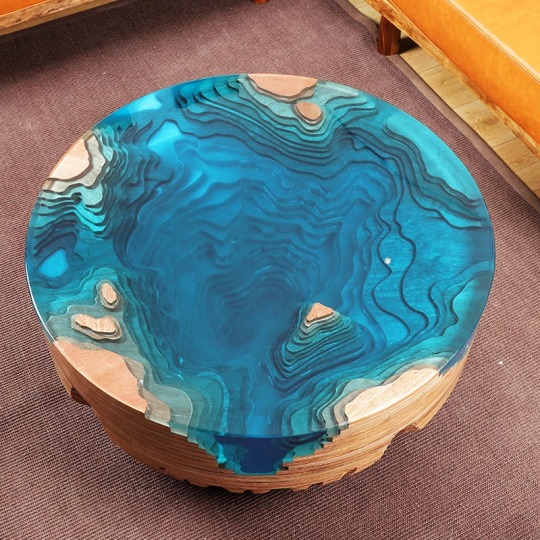
1 note
·
View note
Text
Stefan Wewerka, Tisch M1 (Fächertisch), Tecta, 1979

342 notes
·
View notes
Text
D26 Armchair by Tecta - 2011 IMM Cologne (34)
D26 Armchair by Tecta – 2011 IMM Cologne (34) With Google Lens it is easier nowadays to pinpoint the provenance.
0 notes
Text
Wet Beast Wednesday: ocean sunfish
Everybody knows ocean sunfish, right? Those giant, slow, silly-looking, parasite-ridden morons that eat jellyfish and can't defend themselves from predators really are the worst fish right?

(GIF: Lex Luthor screaming "WRONG!" from the movie Superman Returns)
First of all there's no such thing as a "best" or "worst" animal and judging animals by human standards of what is cool or successful is silly because our standards are not even universal among humans, let along other species. Secondly, the closest thing we have to a way to judge a species is how successful it is in its niche and sunfish are doing pretty good, thank you very much. Today I'll be talking about sunfish and how they are not bad fish at all.
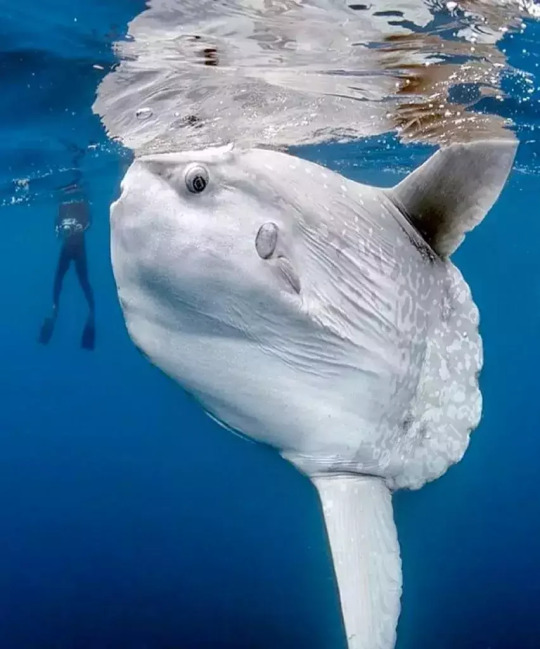
(Image: a Mola mola located near the surface of the ocean, with the tip of its dorsal fin and part of its head breaching the surface. It is a round fish with no tail, only a wrinkly region of its body. Its dorsal and anal fins are long and slender The eyes and mouth are proportionately small. It is a pale white with light grey spots. A SCUBA diver is visible in the background. End ID)
Ocean sunfish, or molas, are members of the family Molidae, which is divided into five known species across three genuses. Im mostly going to be talking about members of the genus Mola, but I'll mention the other two as well. Molas are known for their size and odd appearances, looking like someone chopped a fish in half and the front half went swimming off on its own. They are members of the order Tetraodontiformes, making them cousins to pufferfish, triggerfish, boxfish, and others. While many members of that order are known to be highly poisonous, molas are not. They also lack several other common traits. Despite being bony fish, most of the mola skeleton is made of cartilage and they do not have swim bladders, forcing them to actively swim to maintain their position in the water column. Instead of a tail and caudal fin, sunfish have a structure called the clavus. The clavus is formed mostly from connective tissue and is used as a rudder. Because the clavus is mostly made of connective tissue, damage to it is not particularly harmful to the fish. There have been molas found alive and well that have had portions of their clavus eaten by predators. Because of their shortened stature, molas have the fewest vertebrae of all fish. The dorsal and anal fins are elongated and are used to provide propulsion by flapping back and fourth similarly to how birds wings move, albeit slower. Minute alterations in the angle each fin moves through the water help with steering, while more sharp turns are aided with jets of water ejected through the mouth and gills. Like their other Tetraodintid relatives, mola teeth are fused together into a beak-like structure that prevents them from closing their mouths. They also have some more regular pharyngeal teeth in the backs of their mouths. Some reports say that the fish can make noises by grinding the pharyngeal teeth together. Mola skin is thick and rough, described as being similar to sandpaper in texture. Like most fish, the skin is covered in a layer of protective mucus.

(Image: a mola sunbathing. It is positioned with one side of its body facing the surface. Its body is just under the water's surface. End ID)
The three species in the genus Mola are Mola mola, the ocean sunfish and most well-known of the molas, Mola alexandrini, the giant, southern, or bumphead mola, and Mola tecta, the hoodwinker sunfish. Mola mola has an average weight of 247 to 1000 kg (545 to 2205 lbs), mouth to clavus length of 1.8 m (5.9 ft) and dorsal to anal fin length of 2.5 m (8.2 ft), though some individuals can get much large. The largest individual on record had a length of 3.3 m (10.8 ft), height of 3.2 m (10.5 ft) and weighed 2300 kg (5100 lbs). M. alexandrini is the largest of the species. The largest known southern sunfish measured in at 2744 kg (6049 lbs) and 3.25 m (10.66 ft) from mouth to clavus, making it the largest known bony fish in the world. They can be distinguished from M. mola by the presence of bumps on the forehead and chin, a more rounded clavus, and differently-shaped scales. M. tecta is known as the hoodwinker sunfish because it was long mistaken for one of the other two species and was only identified as a separate species in 2015 after the body of one washed up in Christchurch, Aotearoa/New Zealand and was examined by scientists. Because it has only recently been discovered, little is known about this species. They appear to have the same range of sizes and weights of the other two species and can be distinguished by a slimmer body shape and a smooth clavus. All three species are found in tropical and temperate waters worldwide, though M. alexandrini and M. tecta are more commonly found in the southern hemisphere.
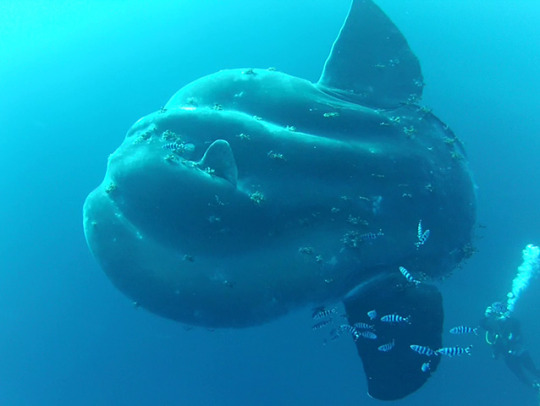
(Image: a Mola alexandrini underwater. It is distinguishable from Mola mola by the two bumps above and below its facial region, making it look lumpy. It is surrounded by striped cleaner fish. A SCUBA diver is in the background. End ID)
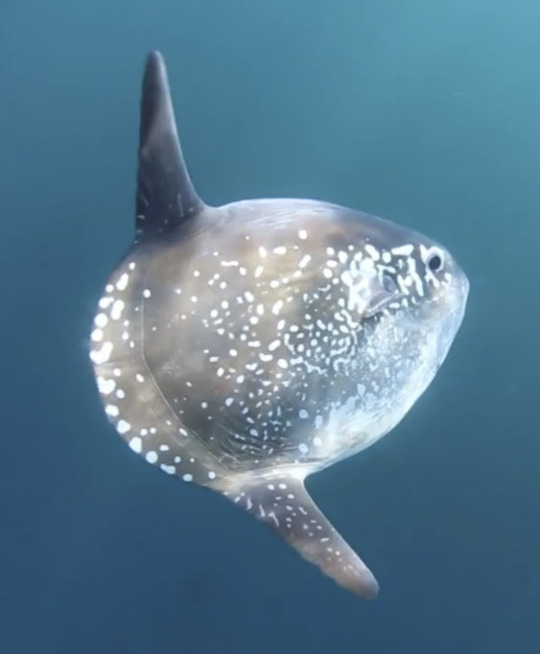
(Image: a Mola tecta seen from the side. It is smoother than the other two species. More of its body is grey with white spots. End ID)
Molas are open-ocean dwellers that live life in the slow lane. For a long time, it was believed they were moved around by ocean currents they could not swim against, making them plankton. We now know they not only can swim against the current, they are capable of bursts of speed fast enough to breach the water's surface and briefly go airborne. Sunfish are named for their habit of basking at the surface of the water. It was formerly believed they spent most of their time at the surface, but thanks to tagging, we know they make frequent dives into the deep ocean. They likely bask at the surface to warm up between dives. You may not expect something as slow as a sunfish to be a predator, but they are. Much of their diet consists of gelatinous animals including jellyfish, siphonophores, ctenophores, and salps, though they will also eat small fish, fish larvae, squids, crustaceans, and even seagrass. Because they can't chew, sunfish move prey into and out of their mouth by rapidly switching between sucking water in and spitting it out in order to shred the prey into pieces small enough to swallow. Special mucus lining the digestive system may protect the molas from the stinging tentacles of their prey. Molas and other jellyfish-eaters like the leatherback sea turtle play an important role in the ecosystem by keeping jellyfish populations down. Jellyfish are not particularly nutritious, so the sunfish need to eat a lot of them to survive, something they seem to be pretty good at. Being slow and having a very low-energy lifestyle helps the fish survive on a less-nutritious diet, making them very energy efficient. One thing molas get a lot of flack for online is having lots of parasites (with up to 40 known species). This doesn't really make sense. Every species has parasites. An animal in the wild that doesn't have parasites is vanishingly rare. Having parasites doesn't make an animal suck, it makes them ordinary. Because of their parasite load, molas are frequent visitors to cleaner fish, who will eat their parasites. Molas will also let seabirds land on them and eat their parasites while they rest on the surface. The molas attract birds by splashing at the surface. Adult molas have few natural predators, but are hunted by sharks, sea lions, and orcas. Interestingly, sea lions have been known to kill molas apparently for sport, ripping off the fins and then leaving the mola to die.

(Image: a mola seen from the front. Multiple smaller fish are picking parasites off of its skin. End ID)
Molas are broadcast spawners who release their gametes into the water alongside each other. A female mola can release 300 million eggs at a time, more than any other vertebrate. Newly hatched sunfish are 2.5 millimeters long and are often cited as having the largest discrepancy in size between juvenile and adult of any vertebrate. An adult mola can be 60 millions times the weight of a larva. The larvae look very different than adult, lacking their dorsal and anal fins but having pufferfish-like spines. Juveniles school together for protection and become solitary as they age. The diet of the fish varies as they age, with younger fish feeding more on squid, worms, crustaceans, and fish but becoming more reliant on jellyfish and other gelatinous prey as they age. We don't know the growth rate of molas, but a juvenile in the Monterey Bay Aquarium grew from 26 to 339 kg (57 to 880 lbs) in 15 months, suggesting they grow rapidly. The maximum age of molas is unknown, though individuals in captivity have lives for up to 10 years.

(Image: a mola larva. It is a brown ball with large, black eyes and no visible fins. It is covered in transparent, conical spines. End ID)
The two non-Mola sunfish are Ranzania laevis, the slender sunfish and Masturus lanceolatus, the sharptail sunfish. Both are alone in the genuses, but other species are suspected. I also found references to other species in Masturus, but could find literally no information about them other than that Masturus oxyuropterus is listed in some records. The sharptail sunfish looks very similar to Mola mola and reaches similar sizes, but its clavus has an extension that looks like a short tail. They were initially believed to be deformed molas before being recognized as a separate species. Unlike molas, sharptail sunfish are rarely seen at the surface, preferring to stay in deeper water. The slender sunfish is the smallest of the family, reaching up to a meter long. While we don't know much about them, we know their diet includes a lot of fast-moving squid, indicating they can move faster than their much larger relatives.
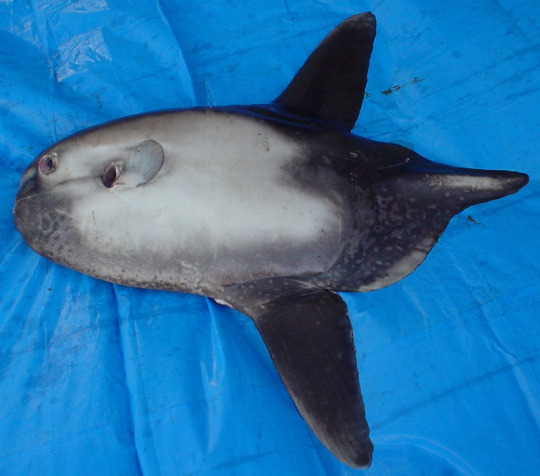
(Image: a sharptail sunfish lying on a blue tarp. It looks similar to a Mola mola , but with black clavus and fins. At the back of the clavus is a triangular extension. End ID)
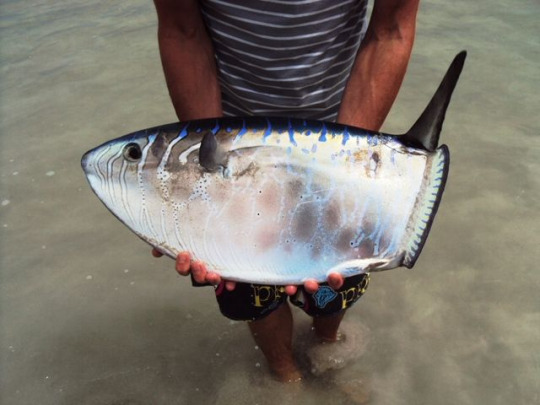
(Image: a person holding a slender sunfish. The fish is small enough to be held and has a longer and skinnier body than other sunfish. Its body is a shiny silver with blue lines. End ID)
Mola mola is classified as vulnerable by the IUCN while the other species are classed as either data deficient or least concern. Molas are vulnerable to strikes by boats and bycatch. Another danger to them is plastic bags, which can easily be ingested after being mistaken for a jellyfish. The bags can suffocate the fish or block their digestive tracts. Despite their size, molas are docile and not dangerous to humans. I found one example of a mola harming a human and it happened when the fish jumped out of the water and landed on a boat. Allegedly, some fish have learned to recognize and approach SCUBA divers. Molas are difficult to keep in captivity due to their size, the amount of space the need, and special feeding needs, so only a few aquariums have them. Molas are captured for food, with the biggest markets being in Taiwan and Japan, where they are often called mambos.
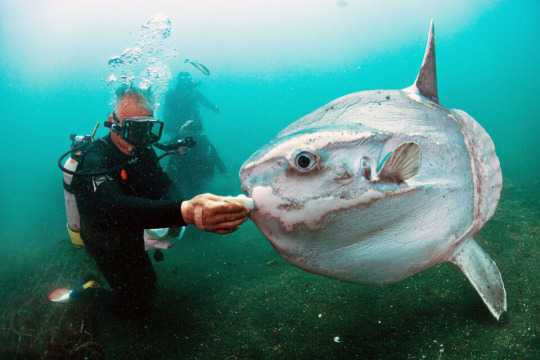
(Image: a SCUBA diver attempting to hand feed a small mola. End ID)
#wet beast wednesday#ocean sunfish#mola mola#name so nice you say it twice#countering sunfish slander#mola alexandrini#mola tecta#sharptail mola#Masturus lanceolatus#slender sunfish#Ranzania laevis#fish#fishblr#fishposting#marine biology#biology#zoology#ecology#animal facts#image described
221 notes
·
View notes
Text

niche meme spawned by the third classic blunder, getting into fishing in ffxiv
16 notes
·
View notes
Text
Switch is such a mean name for such a nice plant.
I genuinely, genuinely resent calling this fucking plant a whip. Especially in the Southern US. That's so fucking unecessary.
Fortunately it also goes by "small cane" so that's what I'm fucking calling it from now on.
2 notes
·
View notes
Text
Critter fact #140:

The Indian roofed turtle (Pangshura tecta) has larger females than males
10 notes
·
View notes
Photo

here is another good post that i made. it was inspired by my three week attempt at catching cinder surprise.
#emet selch#and the no good horrible very bad egg#i did catch it tho!!!#tbh i think more tecta and lancetfish are worse
8 notes
·
View notes
Text
[ID 1: A screenshot of tags that read, "There's bamboo native the the united states? hello? Is this gonna turn into a research thing like inneskeeper's soy sauce saga, either way this sis some of the most information of all time". End ID 1.]
[ID 2: Three photos of river cane, showing lower down near the grond, then the middle, and then the camera pointed up to show the tops. The river cane has straight, narrow stems like other bamboos, mostl dark green, with light brown of old, dried leaves. The ground below is covered in dead leaves. In the last photo, the cane stretch high above the camera into the blue sky. End ID 2.]
[ID 3: A screenshot of a reply by motherfucking-dragons, asking, "What is the endangered pitcher plant?" this is followed by a photo of the Alabama canebreak pitcherplant, which has very pale green and yellow tube shaped leaves facing up into the sky, some tinged with red. End ID 3.]
[ID 4: Another photo of the river canebreak, showing the tall plants from the middle at eyelevel. They grow densely packed, with the ground covered in the dried leaves. End ID 4.]
[ID 5: Three photos. The first shows a collection of rivercane seeds on a black surface. They are dark, dull green or brown, and and shaped like tiny cobs of corn, most of them attached to eachother in staggered rows on their original stems. The next photo shows one of the seeds held in a dirt covered hand, light brown and germinating with a small white root emerging. The third photo shows the seed forming its first tiny shoot above soil. End ID 5.]
[ID 6. A photo of several dozen assorted small plant pots, each with one or two river cane seedlings growing in them. The seedlings are very thin, with short, grassy leaves. Some of the plant pots are traditional starter posts, other are plastic cups. End ID 6.]
[ID 7. A photo from above of a young rivercane plant with three shoots, showing healthy green leaves, while in the background the ground is covered in dead maple leaves from fall. End ID 7.]
____
hey, I didn't realize this plant was a big deal, there's a ton near us. So if you want to really easy way to clone it... Put a plant pot with big holes in the bottom near it, and wait for it to send a shoot up through the bottom of the plant pot and into the air. Let it grow for a while and then cut off the root connecting the pot to the ground.
This has happened multiple times completely by accident.
If it works the same way as our purple passionflowers, which are also native, then you can probably just move that pot somewhere else and it will once again grow roots through the ground and then you have more clones. And how to tell both of them apart from the invasive bamboos.
I got a photo a while ago of a massive clump from across a creek, and I would like to know if it's the native or invasive kind:


[ID: Two photos of a bamboo plant from a distance. The first shows very long, thin canes with small green leaves. The second is zoomed out, with a hand shielding the camera from the sun's glare at the top, showing a massive cluster of the bamboo hanging down over the side of a creek at the bottom of a hill. End ID.]
I can probably get better pictures of it this year.
Someone needs to go on iNaturalist and hyperfixate about identifying this genus
Update several hours later: We now have clones of three different plants from our general area and tomorrow I'll go out and get clones from two more I know of. Still not sure if they're actually river cane (Arundinaria gigantea) or switch cane (Arundinaria tecta).
Edit again: helpful site for identifying 3 of the different native species
y'all ever reach the end of google
#Long post#Native plants#land back#Landback#River cane#Arundinaria#described images#Arundinaria gigantea#Arundinaria tecta
109K notes
·
View notes
Text

Indian Roofed Turtle (Pangshura tecta), family Geoemydidae, hatchling, found in major rivers of South Asia
photograph by Dick Bartlett
4K notes
·
View notes
Text

ウォールナット無垢 変形テーブル【ハイグレード】スタイリッシュなデザイン✨ 天板も脚も上質な無垢材 広島市西区商工センターの家具屋、インテリアショップ サカミツ家具
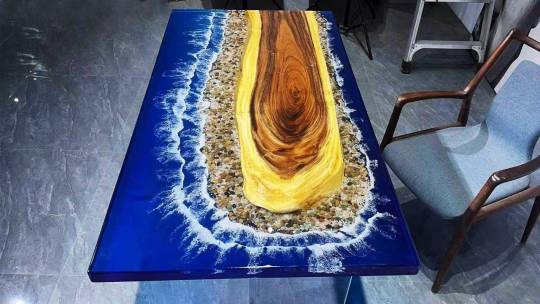








0 notes
Text

Indian Roofed Turtles (Pangshura tecta), hatchlings, family Geoemydidae, found in major rivers of South Asia photograph by Turtle Island
606 notes
·
View notes
Text
idk how to phrase this but something about how classicists who otherwise are very interested in breaking down the notion of authorship get almost performatively dismissive about Christian/messianic readings of Vergil’s 4th Eclogue is so fascinating to me. like yes obviously from a historicist point of view the 4th Eclogue is Not About That, but the transmission/reception cycle of the entire Vergilian corpus is inextricable from Medieval and Renaissance interpretatio Christiana and to be like “lol people thought this poem from the 30s BCE is about Jesus, isn’t that silly” feels very much like “look how much smarter we modern scholars are than our earlier counterparts” and refuses to engage with the idea that a text might have meaningful things to say about something it can’t possibly be ‘about’ in the strict historicist sense.
and on this point we might also think of the eerie scene of desolated fields of Thessaly and bodies crowding into “Pharsalia tecta” at Catullus 64.37, a poem which certainly predates the Battle of Pharsalus. if you pressed me on it, I wouldn’t say that Catullus had some magical prophetic knowledge - but I do think the Catullan text is haunted by the ghosts of Pharsalus, and that text only exists as a thing for us in modernity because of the hands of copyists who were themselves living in a post-Pharsalus world. and the same principle applies to Eclogue 4 I think
260 notes
·
View notes
Text


Rejoice, dear followers! Our congregation has grown! We welcome our fellow siblings to the shoal, our hearts sing as they accept the loving holy light that gleams off the Great Ocean Sunfish.
As we open our hearts, we open our inbox. Speak, my children! Sing words of praise and adoration!
Mola tecta! Masturus lanceolatus! Mola alexandrini! Mola mola! All hail the ocean sunfish 🙏🙏🙏
#ocean sunfish#mola mola#digital art#stained glass#marine life#illustration#all hail the ocean sunfish 🙏🙏🙏
126 notes
·
View notes
